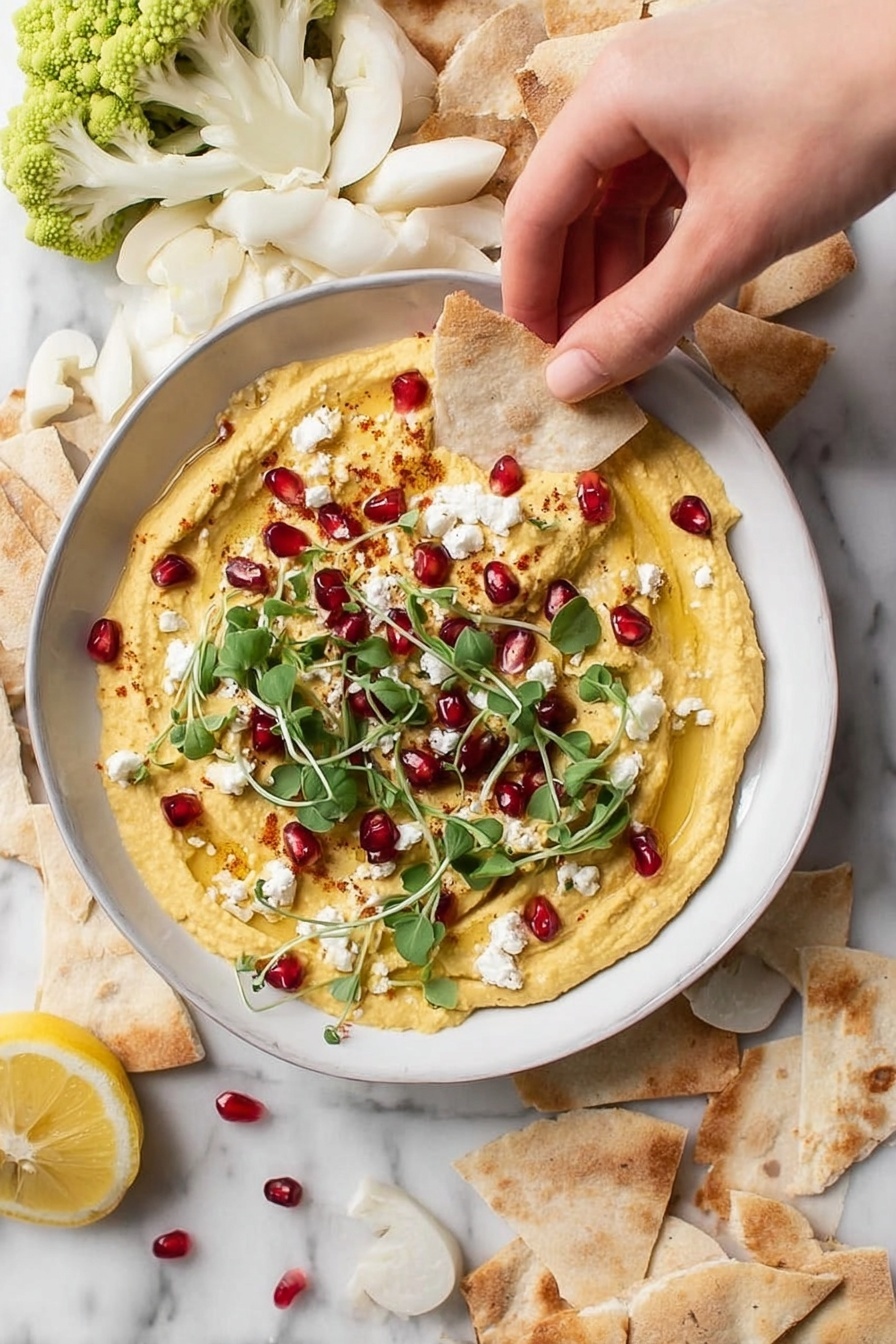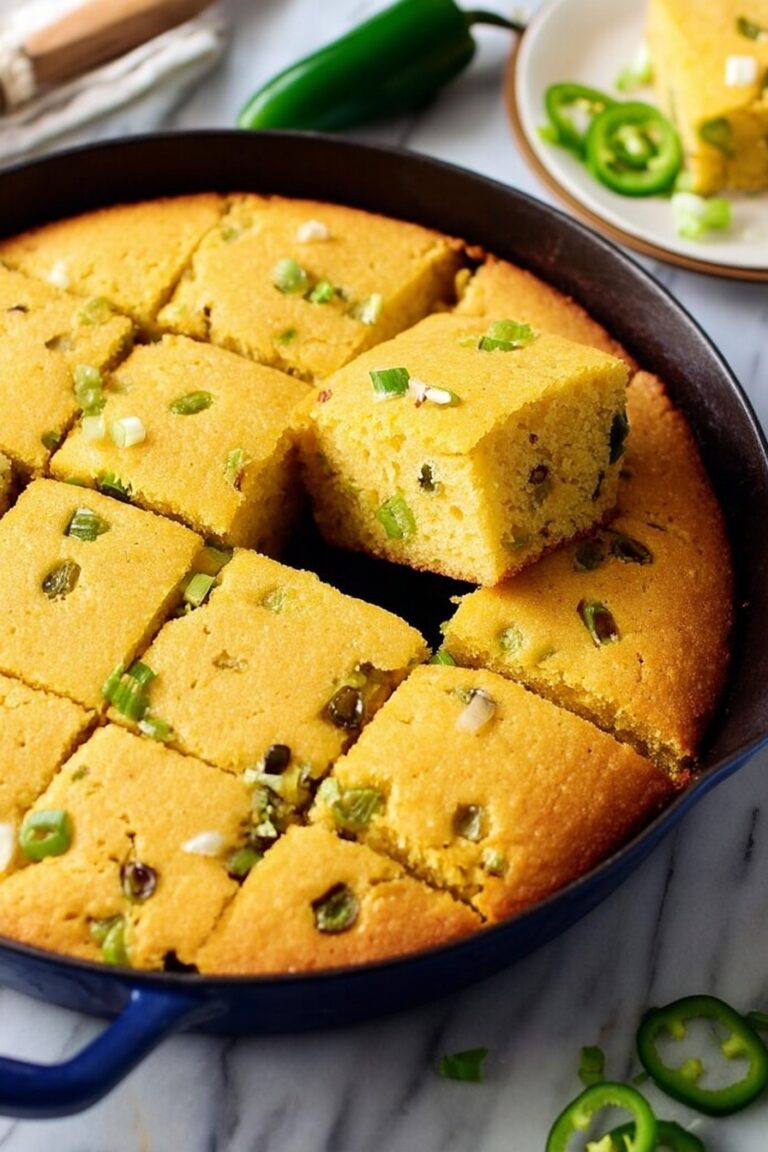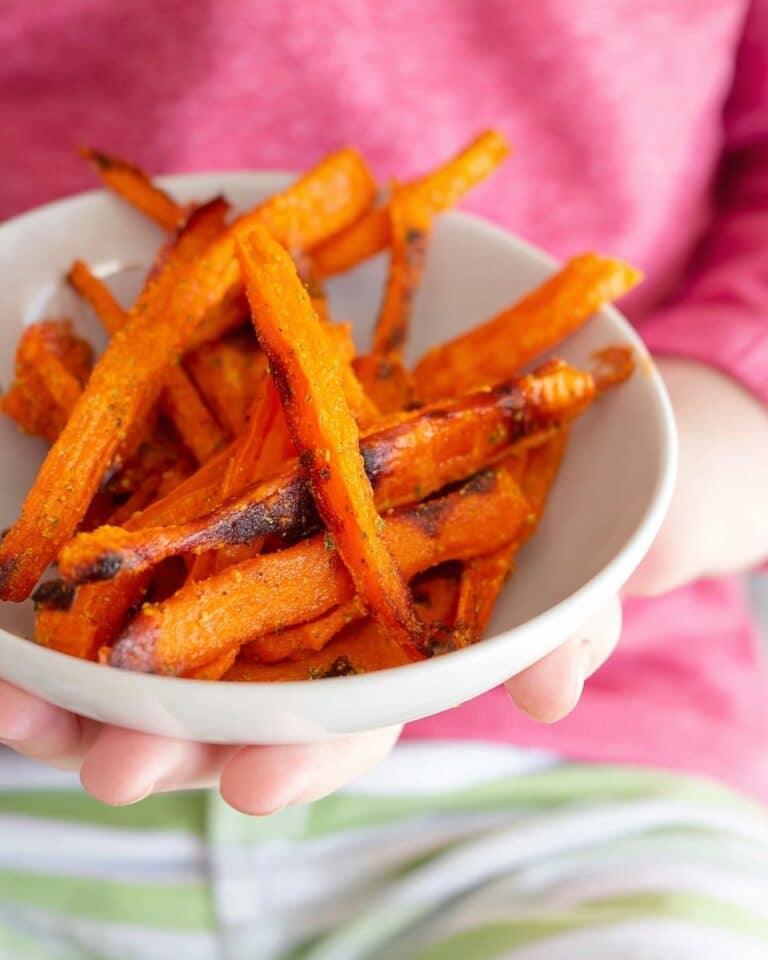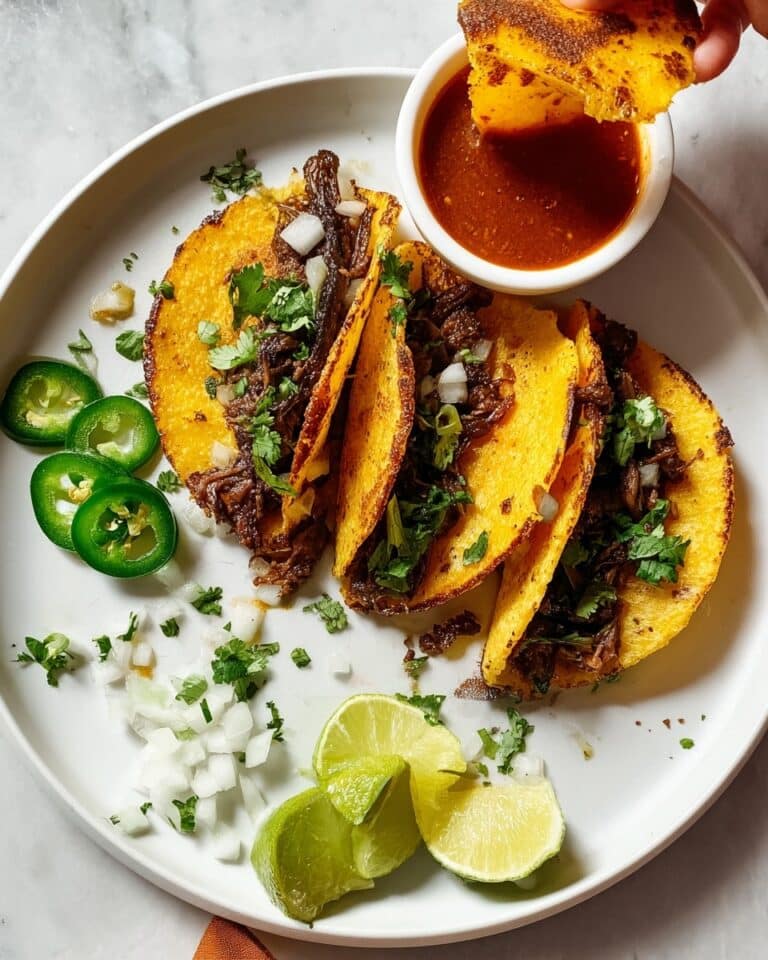If you’re ready to try something a little bit different but totally irresistible, you’re going to fall head over heels for this Butternut Squash Hummus with Feta and Pomegranates Recipe. It’s got that perfect balance of creamy, tangy, sweet, and slightly spicy that just lights up your taste buds—and it’s stunning enough to bring to any gathering. Trust me, once you whip this up, you’ll want to keep it on repeat.
Why You’ll Love This Recipe
- Unique Flavor Combination: The roasted butternut squash adds a subtle sweetness that pairs beautifully with the tangy feta and juicy pomegranate seeds.
- Easy to Make: With simple ingredients and straightforward steps, you’ll have this hummus ready faster than you expect.
- Versatile Serving Options: Perfect for dipping, spreading, or even as a vibrant salad topper.
- Crowd-Pleaser: I’ve brought this to parties and potlucks, and it always disappears quickly—my family goes crazy for it!
Ingredients You’ll Need
The magic of this Butternut Squash Hummus with Feta and Pomegranates Recipe really lies in the balance of flavors and textures. Each component plays a crucial role—think sweet roasted squash, creamy tahini, zesty lemon, and that pop of juicy pomegranate. When shopping, look for fresh, firm butternut squash and ripe pomegranates for maximum flavor.
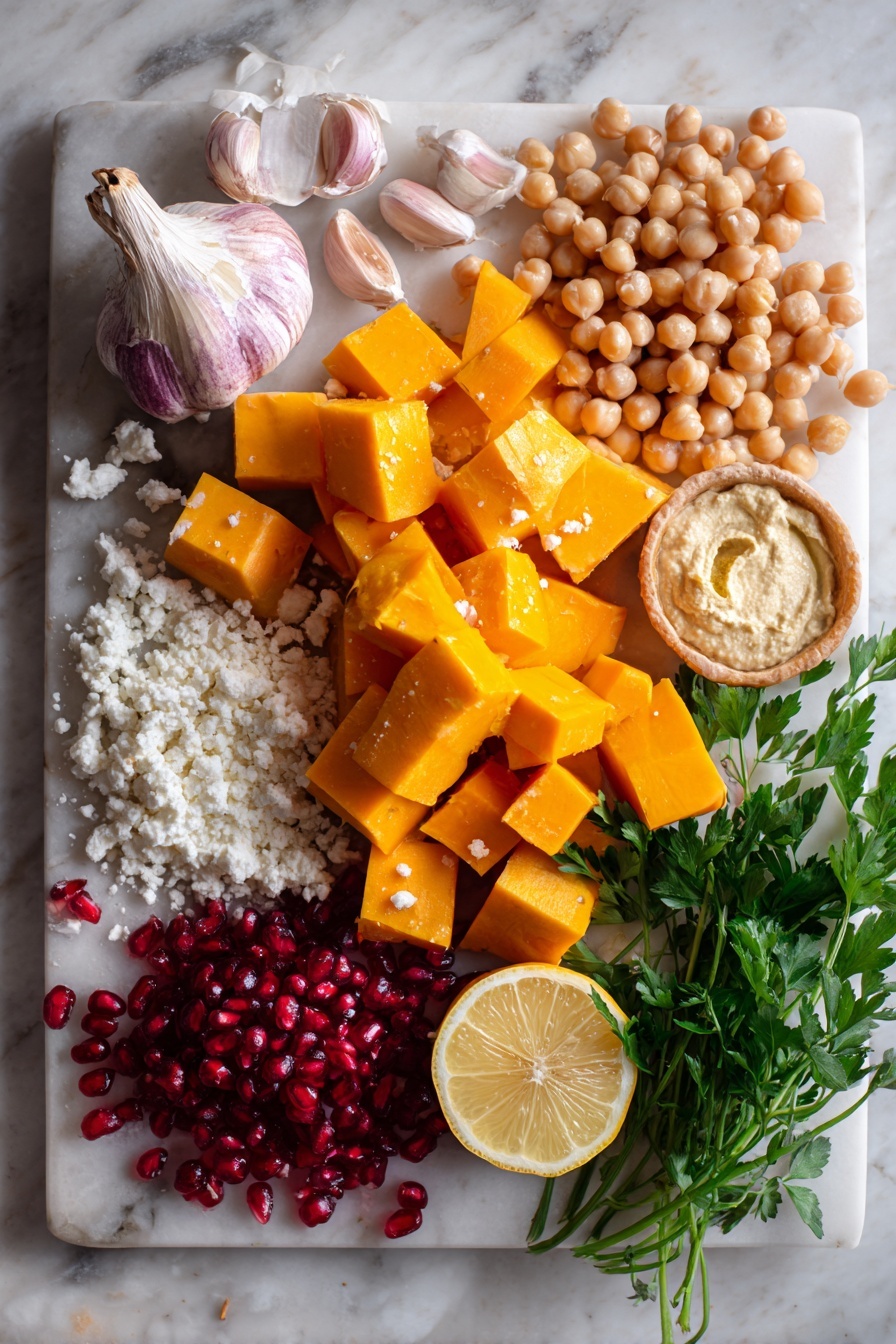
- Butternut Squash: Choose one with a smooth, unblemished skin for sweeter flavor and easier roasting.
- Garlic: Roasting it softens the sharpness and rounds out the flavor beautifully.
- Chickpeas: Use cooked or canned chickpeas, rinsed well to remove excess sodium.
- Tahini: This sesame paste adds the classic hummus creaminess and subtle nuttiness.
- Fresh Lemon Juice: Always fresh—bottled just doesn’t cut it here for brightness.
- Spices (Cumin, Coriander, Cayenne, Sea Salt): These add warmth and a touch of smoky heat—adjust cayenne to your spice tolerance.
- Extra-Virgin Olive Oil: For richness and smooth blending, plus a drizzle on top.
- Water: Helps achieve that perfect creamy texture when blending.
- Black Pepper: Freshly ground for the best flavor.
- Pomegranate Arils: Adds bursts of juicy sweetness and a beautiful pop of color.
- Feta Cheese: Crumbled on top for a salty tang contrast.
- Parsley and Microgreens: Fresh herbs lift the dish and add visual appeal.
- Pita, Crackers, and Veggies: For serving and dipping, pick your favorites!
Variations
I love how versatile this Butternut Squash Hummus with Feta and Pomegranates Recipe is. Sometimes I like to switch things up by playing with heat levels or adding different toppings—don’t hesitate to personalize it to suit your taste buds or dietary needs.
- Milder Spice Level: If you’re sensitive to cayenne, start with just a pinch or swap it for smoked paprika for warmth without heat—my kids actually prefer it this way.
- Dairy-Free Version: Skip the feta and instead sprinkle with toasted pine nuts or pumpkin seeds—they add such a lovely crunch!
- Seasonal Twist: Try swapping pomegranates with fresh pomegranate molasses drizzle or dried cranberries when fresh seeds aren’t in season.
- Extra Creamy: Adding a dollop of Greek yogurt or silken tofu makes it even creamier, which I discovered when making it for a friend who loves richer hummus.
How to Make Butternut Squash Hummus with Feta and Pomegranates Recipe
Step 1: Roast the Butternut Squash and Garlic
Preheat your oven to 400°F and line a baking sheet with parchment paper. Toss the cubed butternut squash with a light drizzle of olive oil, a pinch of salt, and freshly ground pepper. Place the cubes evenly spaced on the sheet. For the garlic, wrap whole peeled cloves in foil with a drizzle of olive oil and a sprinkle of salt—it softens wonderfully roasting this way. Pop them both in the oven for about 20 to 25 minutes until the squash turns tender and golden on the edges. You’ll know it’s ready when you can easily pierce a cube with a fork. Let everything cool slightly before the next step to avoid overheating your food processor.
Step 2: Blend Ingredients to Creamy Perfection
In your food processor, combine the roasted butternut squash, the softened garlic (remember to squeeze it out of the foil), chickpeas, tahini, fresh lemon juice, cumin, coriander, cayenne, and sea salt. Start blending while drizzling in your olive oil slowly. Add water a little at a time to help the hummus reach that luscious, creamy consistency you want. Don’t be surprised if it tastes a bit spicy before you add the oil—that olive oil is the secret to mellowing out the heat. Give it a final taste and adjust any seasonings to your liking. I usually add a quick pinch more salt or lemon juice to brighten it up right at the end.
Step 3: Serve with Beautiful Toppings
Transfer your hummus into a serving bowl, then sprinkle generously with fresh pomegranate arils and crumbled feta cheese. Chop parsley over the top for a fresh, herbal note, and add microgreens if you’re feeling fancy. Finally, drizzle a little extra olive oil for that irresistible shine and richness. Serve warm or at room temperature with toasted pita, crunchy crackers, or crisp veggies for dipping—you’ll find that everyone grabs for it immediately!
Pro Tips for Making Butternut Squash Hummus with Feta and Pomegranates Recipe
- Roast Evenly: Make sure your butternut cubes are about the same size so they cook uniformly and soften at the same time.
- Peel Garlic Easily: Roasting whole garlic cloves in foil makes the skins slip off effortlessly—ask me how many times I struggled before learning this hack!
- Adjust Water Gradually: Add water slowly when blending to avoid a runny dip while still achieving a creamy texture.
- Taste as You Go: Sometimes a pinch more cumin or a squeeze extra lemon juice makes all the difference—don’t be shy about sampling!
How to Serve Butternut Squash Hummus with Feta and Pomegranates Recipe
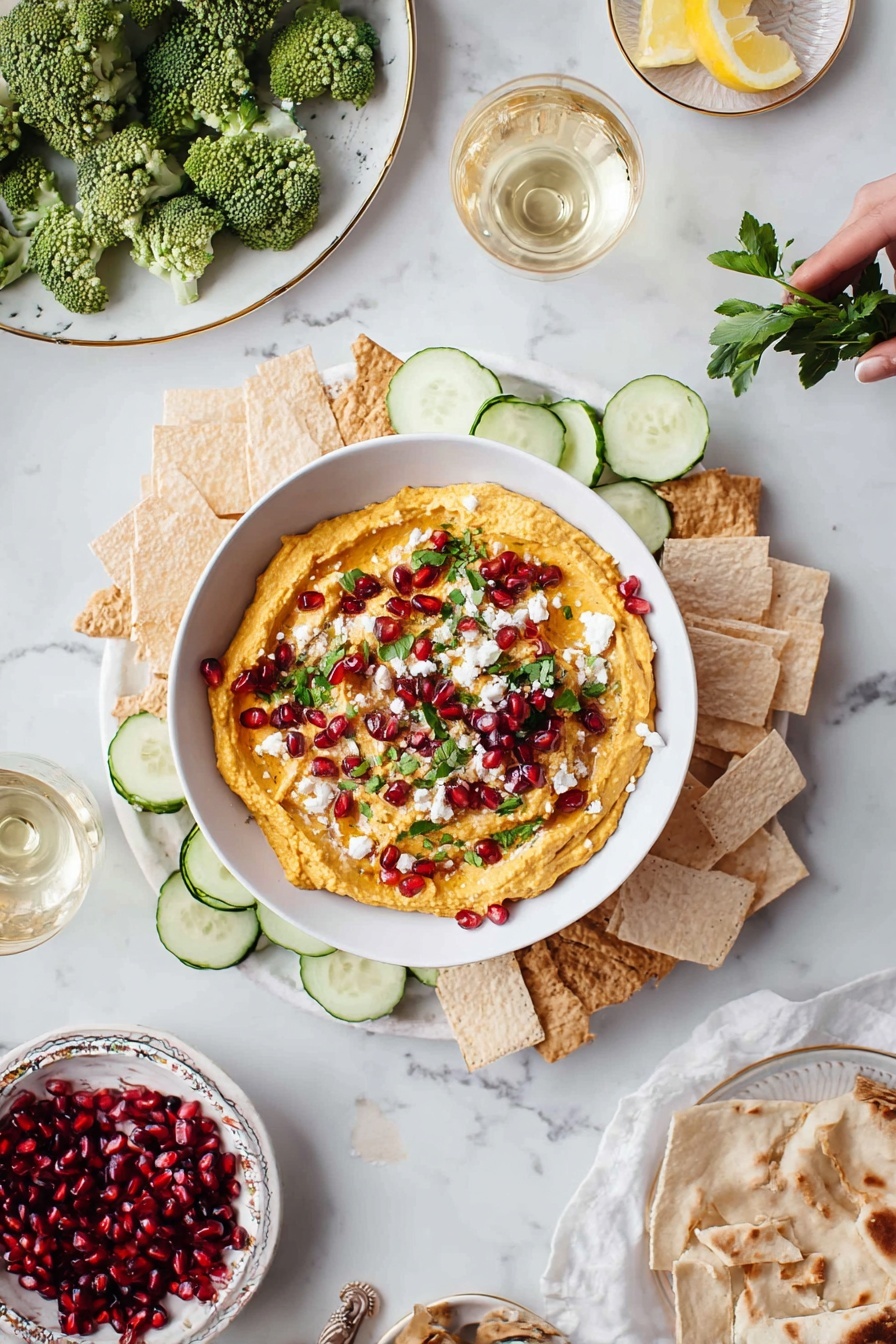
Garnishes
I usually stick with the classic yet show-stopping combo of pomegranate seeds and salty feta on top because they bring such color and texture contrast. Fresh parsley adds a lovely herbal brightness, and microgreens offer a delicate elegance when serving guests. Sometimes I toss on toasted pumpkin seeds or sprinkle with za’atar for extra flair if I’m feeling adventurous.
Side Dishes
This hummus pairs beautifully with warm pita wedges or crunchy crackers—you can never go wrong there. For veggies, I like sturdy dippers like cucumber slices, carrot sticks, or bell pepper strips for that satisfying crunch. It also makes a great spread on sandwiches or wraps if you want to get creative.
Creative Ways to Present
For parties or special occasions, I like serving this hummus in a shallow bowl surrounded by colorful veggie crudités arranged like a sunburst. Another fun trick is using edible flowers or extra microgreens for a gorgeous finish. Sometimes I make individual hummus cups topped with feta and pomegranate to keep it mess-free and easy for guests to grab one.
Make Ahead and Storage
Storing Leftovers
I usually store leftover hummus in an airtight container in the fridge for up to 4 days. Be sure to press a piece of plastic wrap directly onto the surface of the hummus before sealing the container to prevent it from drying out. When you’re ready to enjoy again, just give it a gentle stir and add a drizzle of olive oil if it looks a bit thick.
Freezing
This recipe freezes decently, though the texture might be a touch less creamy once thawed. I recommend portioning into small freezer-safe containers and freezing up to 2 months. Thaw overnight in the fridge and stir well before serving.
Reheating
I prefer serving this hummus cold or at room temperature, but if you want to warm it, just let it sit out for 20-30 minutes. If you’re in a hurry, microwave on low power in short increments, stirring in between to prevent overheating.
FAQs
-
Can I make Butternut Squash Hummus with Feta and Pomegranates Recipe vegan?
Absolutely! Just skip the feta cheese topping and perhaps add toasted seeds or nuts for extra texture and flavor. The rest of the recipe is naturally vegan.
-
What’s the best way to roast butternut squash for this hummus?
Cut the squash into roughly ½-inch cubes for even roasting. Toss with olive oil, salt, and pepper, and roast at 400°F for 20-25 minutes until tender and lightly golden on edges.
-
Can I use canned chickpeas or should I cook them myself?
Canned chickpeas work perfectly as long as you rinse and drain them well—that removes excess salt and can reduce any canned flavor.
-
How spicy is this hummus?
It has a gentle warmth from the cayenne, but it’s not overpowering. You can always reduce the cayenne to suit your preference or omit it completely for a milder version.
Final Thoughts
I absolutely love how this Butternut Squash Hummus with Feta and Pomegranates Recipe brings together cozy fall flavors with a fresh, vibrant twist. It’s one of those recipes I kept tweaking until it felt just right—sweet, creamy, tangy, and just a touch spicy—and now it’s a staple in my kitchen. Whether you’re serving it up for family snack time or impressing friends at a party, I promise this hummus won’t just disappear—it’ll be begged for. So go ahead, give it a try and watch it become a new favorite in your house!
Print
Butternut Squash Hummus with Feta and Pomegranates Recipe
- Prep Time: 10 minutes
- Cook Time: 25 minutes
- Total Time: 35 minutes
- Yield: Serves 6 to 8 as an appetizer
- Category: Appetizer
- Method: Roasting
- Cuisine: Mediterranean
- Diet: Vegetarian
Description
This vibrant and creamy Butternut Squash Hummus features roasted butternut squash blended with chickpeas, tahini, and warming spices, finished with a bright topping of feta cheese and jewel-like pomegranate arils. It’s a hearty and flavorful appetizer perfect for serving with pita, crackers, or fresh vegetables.
Ingredients
Roasted Vegetables
- 1 cup cubed butternut squash (½ inch cubes)
- 1 large or 2 medium garlic cloves
- Drizzle of olive oil (for roasting)
- Pinches of sea salt and freshly ground black pepper (for roasting)
Hummus Base
- 1½ cups cooked chickpeas, drained and rinsed
- ¼ cup tahini
- 3 tablespoons fresh lemon juice
- ½ teaspoon cumin
- ½ teaspoon coriander
- ½ teaspoon cayenne pepper (less if sensitive to spice)
- ½ teaspoon sea salt, plus more for sprinkling
- ¼ cup extra-virgin olive oil, plus more for drizzling
- ¼ cup water, or as needed
- Freshly ground black pepper, to taste
Toppings & Serving
- ¼ cup POM POMS pomegranate arils
- ¼ cup feta cheese
- 2 tablespoons chopped parsley
- 2 tablespoons microgreens (optional)
- Drizzle of olive oil
- Pita, crackers and/or veggies for serving
Instructions
- Roast the Butternut Squash and Garlic: Preheat the oven to 400°F and line a baking sheet with parchment paper. Toss the cubed butternut squash with a drizzle of olive oil, salt, and pepper, then spread it evenly on the baking sheet. Wrap the garlic cloves in foil with a little olive oil and salt, and place on the same baking sheet. Roast for 20 to 25 minutes until the squash is tender and the garlic softens. Let the ingredients cool slightly.
- Blend the Hummus: In a food processor, combine the roasted butternut squash, peeled roasted garlic, chickpeas, tahini, fresh lemon juice, cumin, coriander, cayenne, and sea salt. Pulse to start mixing.
- Add Olive Oil and Water: With the food processor running, slowly drizzle in the olive oil. Add water gradually as needed to achieve a smooth, creamy consistency. Taste and adjust seasoning with salt, pepper, or lemon juice as desired. Note that the hummus may taste spicy before the olive oil is added, which helps to mellow the heat.
- Assemble and Serve: Transfer the hummus to a serving bowl. Top with pomegranate arils, crumbled feta cheese, chopped parsley, microgreens if using, and a final drizzle of olive oil. Serve immediately with toasted pita bread, crackers, or fresh chopped vegetables for dipping.
Notes
- For less spice, reduce the cayenne pepper amount or omit entirely.
- Roasting the garlic in foil prevents it from burning and softens its sharpness.
- Add water gradually to reach your preferred hummus thickness.
- Microgreens are optional but add a fresh, bright contrast.
- This hummus can be stored in an airtight container in the refrigerator for up to 3 days.
- For a smoother texture, peel the chickpeas before blending, though this is optional.
Nutrition
- Serving Size: About 1/6 of recipe (approximately 1/3 cup)
- Calories: 180 kcal
- Sugar: 3 g
- Sodium: 210 mg
- Fat: 11 g
- Saturated Fat: 2 g
- Unsaturated Fat: 8 g
- Trans Fat: 0 g
- Carbohydrates: 18 g
- Fiber: 5 g
- Protein: 6 g
- Cholesterol: 7 mg

